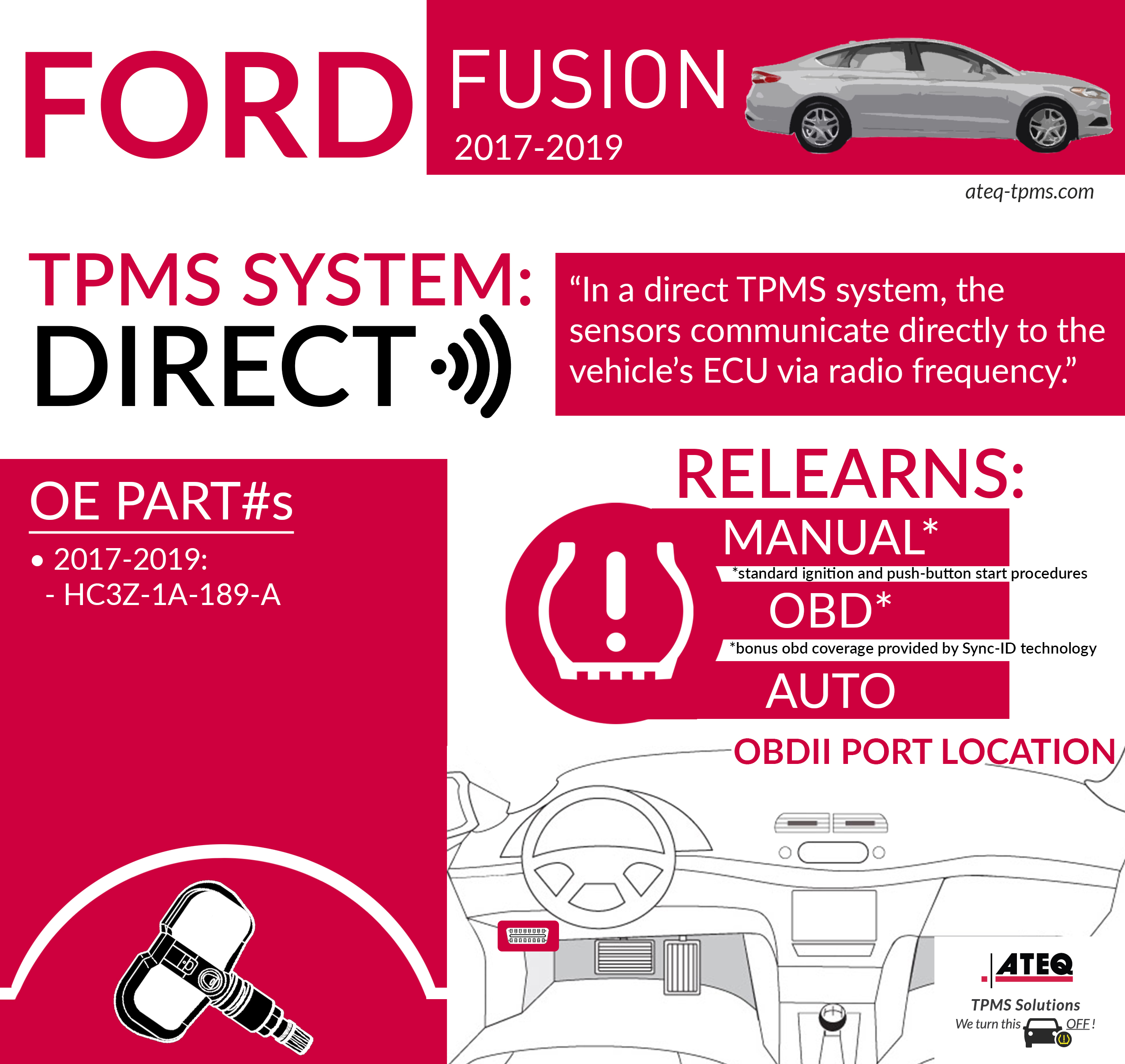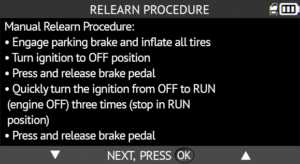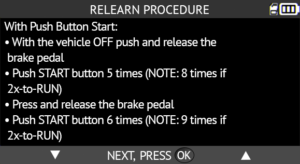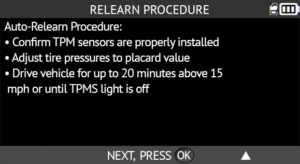Back to the news page
01.13.2019
TPMS diagnostic information – Ford Fusion 2016 – 2018

After the TREAD Act was mandated in 2007, all vehicles manufactured in the United States beginning in 2008, must be installed with direct or indirect TPMS systems.
The Ford Fusion uses a direct TPMS system, which means TPMS sensors are installed in the wheel. If one or more tires indicate low tire pressure, the TPMS sensors will transfer the information to the vehicle’s ECU. An indicator light (low-line TPMS system) or each tire pressure will show on the dash (high-line TPMS system).
When a tire is inflated, rotated or changed in one or more tires of a Fod Fusion, a TPMS relearn must be performed to write the ID’s to the vehicle.

All programmable, configurable, hybrid and OE-type (one-to-one) TPMS sensor options and service kits can be found in the VT56, VT55, and VT36 TPMS Tools.



Ford Fusion vehicles, years 2017-2019, can be reset via an OBD relearn procedure, as a “bonus” relearn using the VT56 with OBD module. The OBD bonus relearn, known as Sync ID technology, eliminates having to perform a manual, relearn procedure or auto relearn, which requires either many steps or long driving time to turn off the TPMS light. If “OBD RELEARN” is an option, the sensor ID’s can be transferred through the OBD port. ATEQ expects to increase the bonus OBD coverage in time for Ford.
Ford Fusion vehicles may require the start button to be pressed twice during the relearn (without pressing the brake) to enter into RUN mode during the relearn (Ignition ON/Engine OFF). If this is the case, modify steps the manual steps for the push-button start relearn, 3 and 5, as noted in the relearn procedure.
B106A – Pressure Sensor Range Bit Incorrect State
B106B – Tire Pressure Sensor Battery Low (Could Set As Configuring New Driver Door Module)
B106D – TPMS Initiators Not Configured
B106E – Solid State Driver Disabled Due to Short Circuit
B106F – Module Disabled Due to External Fault
B1182:00 – TPMS No Sub Type Information
B1182:55 – TPMS Not Configured
B1217 – Horn Relay Circuit Failure
B1218 – Horn Relay Coil Circuit Short To VBATT
B124D:02 – TPMS General Signal Failure
B1251:00 – TPMS Low Battery No Sub Type Information
B1254:51 – Right Rear (Outside on Dual Wheel) Tire Pressure Sensor & Transmitter Assembly Not Programmed
B1255:51 – Left Rear (Outside on Dual Wheel) Tire Pressure Sensor & Transmitter Assembly Not Programmed
B1317 – Battery Voltage High
B1342 – ECU is Defective
B1359 – Ignition Run/ACC Circuit Fault
B1363 – Ignition Start Circuit Fault
B1D55:01 – Antenna No. 2 General Electrical Failure
B2477 – Module Configuration Failure and/Or Mismatch
B2868 – LF Tire Pressure Sensor Malfunction
B2869 – RF Tire Pressure Sensor Malfunction
B2870 – RR Tire Pressure Sensor Malfunction
B2871 – LR Tire Pressure Sensor Malfunction
B2872 – Tire Pressure Sensor Fault
B287A – Tire Pressure System Malfunction
C1A56:51 – Left Front Tire Pressure Sensor & Transmitter Assembly Not Programmed
C1A58:51 – Right Front Tire Pressure Sensor & Transmitter Assembly Not Programmed
C2780 – ECU In Manufacturing Mode
U0140:87 – Lost Communication w/BCM Missing Message
U0155 – Lost Communication With Instrument Cluster
U0422:68 – Invalid Data Received From BCM Event Information
U1041 – SCP Invalid or Missing Data for Vehicle Speed
U1262 – SCP Communication Bus Fault
U1900 – CAN Communication Bus Fault
U2023 – Fault Received from External Mode Communication Bus Fault
U2050 – No Application Present
TPMS relearn procedure and other TPMS diagnostic sys...
Instructional video on how to replace a TPMS sensor ...
ATEQ VT56 TPMS Ford OBD relearn protocols now availa...